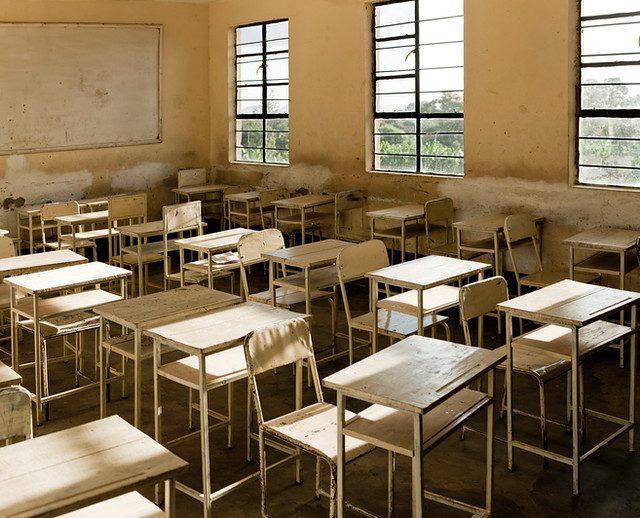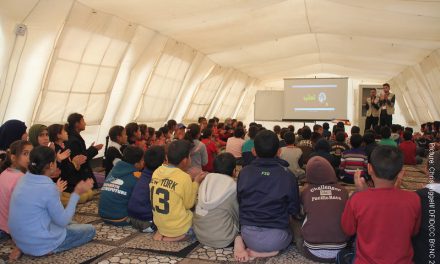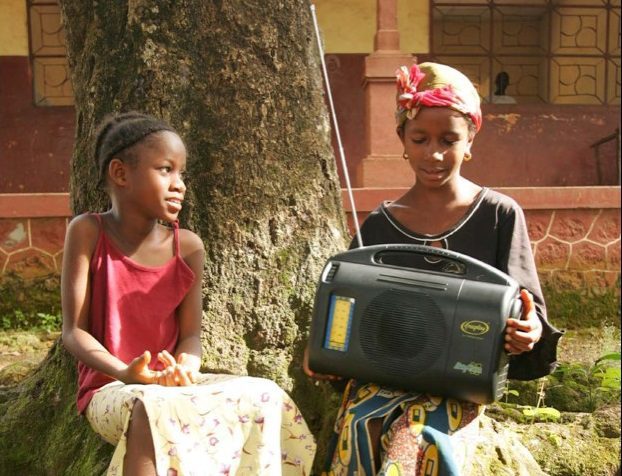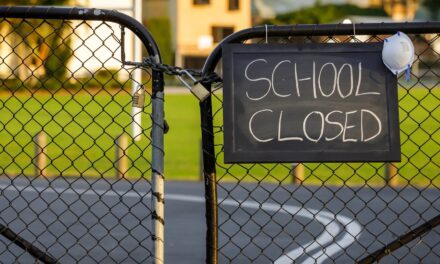This blog was written by Edmund Page, Co-Chair of the Inter-agency Network for Education in Emergencies (INEE) Advocacy Working Group. It was published on the INEE website on 3 June 2020.
Keeping all children and youth safe and learning, during and after the COVID-19 crisis
This blog builds on two products supported by the INEE Advocacy Working Group: 1) the inter-agency COVID-19 advocacy brief ‘Learning must go on: Recommendations for keeping children safe and learning, during and after the COVID-19 crisis’, which highlights that while schooling may stop, learning must not; and 2) a set of advocacy messages, which argue that not only must learning continue during the COVID-19 crisis, but we should prioritize, protect and plan for education and a return to school.
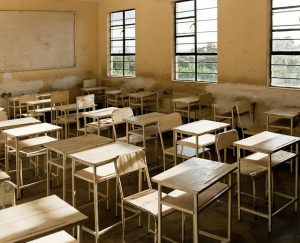 Although many countries have begun opening schools again, school closures have affected nearly 90% of the world’s student population – more than 1.5 billion learners. While the hopeful return to school may still be months off for many – planning for the safe return to learning spaces in advance is essential. For children and youth living in countries affected by humanitarian crises that pre-date the COVID-19 pandemic, the challenges and risks are disproportionately greater. Prioritizing safe, quality education and learning opportunities for all those affected by pre-COVID-19 crises requires urgent action.
Although many countries have begun opening schools again, school closures have affected nearly 90% of the world’s student population – more than 1.5 billion learners. While the hopeful return to school may still be months off for many – planning for the safe return to learning spaces in advance is essential. For children and youth living in countries affected by humanitarian crises that pre-date the COVID-19 pandemic, the challenges and risks are disproportionately greater. Prioritizing safe, quality education and learning opportunities for all those affected by pre-COVID-19 crises requires urgent action.
INEE has been advocating for learning to continue, even and especially in pre-existing emergency contexts. While learning has continued for many even when schools are physically closed, tens of millions of children have not been able to access any education at all during this time. Beyond the continuation of learning, our advocacy also focuses on protecting well-being, addressing the needs of vulnerable children, supporting the specific needs of children affected by crisis, supporting parents and caregivers, and strengthening education systems. This requires maintaining and increasing international funding to countries most in need.
It is exciting to see INEE advocacy briefs being used effectively such as in this case in Honduras described by Gustavo Payan. The Ministry of Education in Honduras was receptive to the more specific advocacy messages highlighted in the advocacy brief shared with them.
We are calling for INEE members to advocate to their governments, donors, and national and international partners to prioritize, protect and plan in their education response to the COVID-19 crisis.
Prioritize –
We must ensure that education is prioritized in all national, regional, and global COVID-19 responses, and that quality teaching and learning continue. Education is a universal human right that is not suspended during an emergency. Children and youth living affected by conflict and crisis must not be left further behind. The continuation of learning is a number one priority for parents, children, and youth during any crisis, including this global pandemic. All education responses should adhere to the INEE Minimum Standards for Education.
- Policy, planning, and financing for the COVID-19 response must include quality education in all local and national response and recovery plans during and after the COVID-19 crisis. Equity and inclusion should be at the centre of these education response plans, with specific strategies outlined for previously out-of-school children and youth. COVID-19 policies and interventions should meet the needs and unique risks faced by the most vulnerable children and youth.
- Maintain and increase financing. Increased funding will be essential to support the reintegration of all children, including marginalised groups back into the school system.
Protect –
All stakeholders need to ensure children and youth are protected from risks in school, home, and community, meeting the Minimum Standards for Child Protection in Humanitarian Action. Protective measures should also ensure that there are adequate water, sanitation and hygiene (WASH) facilities, as well as behaviour support programs and other health, well-being, and protection measures, including those to reduce or eliminate gender-based violence.
- Address the needs of marginalized children and youth: School closures should not further exacerbate educational inequalities on the basis of gender, poverty, disability, ethnicity, religion, geographic location, and more.
- Support the specific needs of children and youth affected by conflict, humanitarian crises and forced displacement: Quality education can play a critical role in mitigating the harmful impact of conflict on children’s well-being and supporting their recovery.
- Continue to protect wellbeing: Mental health and psychosocial support should be fully integrated into educational responses as well as to support children and youth in their return to schooling.
- Provide additional support for teachers and caregivers: the planning for the return to schooling should a) consider the importance of protecting the wellbeing and economic security of teachers and caregivers, and b) involve them in the planning for the return to school and provision of essential information to the community on safe practices for that return.
Plan –
Education authorities and schools must plan for recovery. The earlier schools can safely reopen the better: lessons from previous Ebola responses show that long school closures lead to dropouts of children who never return, increased teenage pregnancies, and other protection issues. Special attention should be paid to health and hygiene measures and ensuring the education system is prepared to address possible protection issues on reopening of schools.
- Long school closures lead to dropouts of children who never return, so schools should open as soon as they are safe to do so. All educational authorities should adhere to the Guidance for COVID-19 Prevention and Control in Schools, released by UNICEF, WHO, and IFRC and endorsed by the Inter-Agency Standing Committee.
- Education systems should be strengthened in preparation for school reopening and in order to prepare for the next one. There is an opportunity to ‘build back better’ after the pandemic and to address past weaknesses, including access to safe sanitation for all learners.
- All educational authorities should adhere to the Guidance for COVID-19 Prevention and Control in Schools. Schools will only reopen when government health authorities say it is safe to do so.
- Teachers and principals should be engaged in the decision-making process and in the planning for the safe return to school.
For additional ideas and advocacy talking points, visit https://inee.org/covid-19/advocacy.

